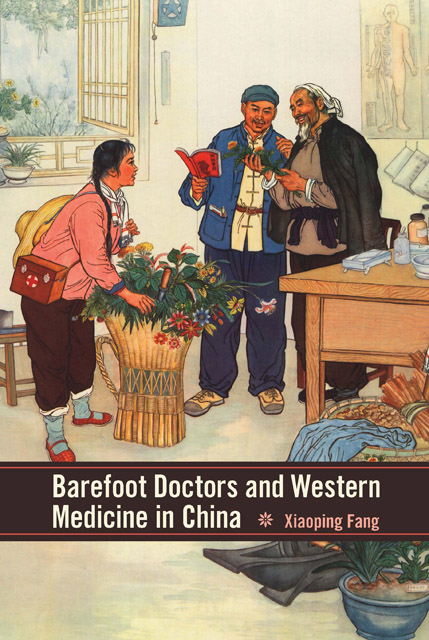Book contents
- Frontmatter
- Contents
- List of Illustrations
- Acknowledgments
- Maps
- Introduction
- 1 Village Healers, Medical Pluralism, and State Medicine
- 2 Revolutionizing Knowledge Transmission Structures
- 3 Pharmaceuticals Reach the Villages
- 4 Healing Styles and Medical Beliefs: The Consumption of Chinese and Western Medicines
- 5 Relocating Illness: The Shift from Home Bedside to Hospital Ward
- 6 Group Identity, Power Relationships, and Medical Legitimacy
- 7 Conclusion
- Appendix One The Organization of the Three-Tiered Medical System in Rural China, 1968–83
- Appendix Two Common Medicines in Chinese Villages during the 1960s–70s
- Abbreviations
- Glossary
- Notes
- Bibliography
- Index
3 - Pharmaceuticals Reach the Villages
Published online by Cambridge University Press: 14 February 2023
- Frontmatter
- Contents
- List of Illustrations
- Acknowledgments
- Maps
- Introduction
- 1 Village Healers, Medical Pluralism, and State Medicine
- 2 Revolutionizing Knowledge Transmission Structures
- 3 Pharmaceuticals Reach the Villages
- 4 Healing Styles and Medical Beliefs: The Consumption of Chinese and Western Medicines
- 5 Relocating Illness: The Shift from Home Bedside to Hospital Ward
- 6 Group Identity, Power Relationships, and Medical Legitimacy
- 7 Conclusion
- Appendix One The Organization of the Three-Tiered Medical System in Rural China, 1968–83
- Appendix Two Common Medicines in Chinese Villages during the 1960s–70s
- Abbreviations
- Glossary
- Notes
- Bibliography
- Index
Summary
Infectious diseases dominated the disease model of China’s villages, just as they did in many other societies prior to the advent of modern medicine. The main pharmaceuticals consumed in rural China were herbal medicines that were mainly gathered from the fields, although traditional nonherbal pharmaceuticals were also used. Together, they comprised two of the basic features of the plural medical systems of traditional village life. However, beginning in the early 1950s, modern Western medicines, vaccines, and medical instruments were introduced into the villages as the newly formed state pharmaceutical sales network extended its national reach. This chapter shows that, contrary to common perceptions of the barefoot doctor program that emphasize its promotion of Chinese herbal medicine, the program was actually crucial to the expansion of Western medicine among villagers. Even though the national government legitimated and promoted Chinese herbal medicine, the barefoot doctor program proved ineffective in expanding the use of herbal medicine in the countryside. The first large-scale encounter of Chinese and Western medicines in rural China—which took place in the context of a modern, innovative, revolutionary health-care delivery program—proved to be a crucial juncture in the history of the use of traditional pharmaceuticals.
The Social Epidemiology of Rural Hangzhou
Diseases in Chinese villages were closely related to the natural environment and the labor and lifestyle practices of rural people. The environment of Hangzhou Prefecture is typical of the Yangtze delta area and has four main geographical features: delta, swamps, mountains, and hills. The terrain of Jiang Village, according to descriptions from the local gazetteer, is high in the south and low in the north, and it belongs to a “swampy plain.” Seven rivers wind through the commune, with a total length of 24.17 km, and fishing ponds are densely concentrated. Arable land accounts for only 45.71 percent of the total area, while water areas comprise 50.29 percent. Average temperatures and rainfall are generally mild, with a rainy season that begins in May or June, and very hot and rainy weather from July to September. These geographical and climatological features facilitated the spread of disease.
The natural environment affected the spread of disease mainly through the water and human and livestock waste.
- Type
- Chapter
- Information
- Barefoot Doctors and Western Medicine in China , pp. 67 - 93Publisher: Boydell & BrewerPrint publication year: 2012



